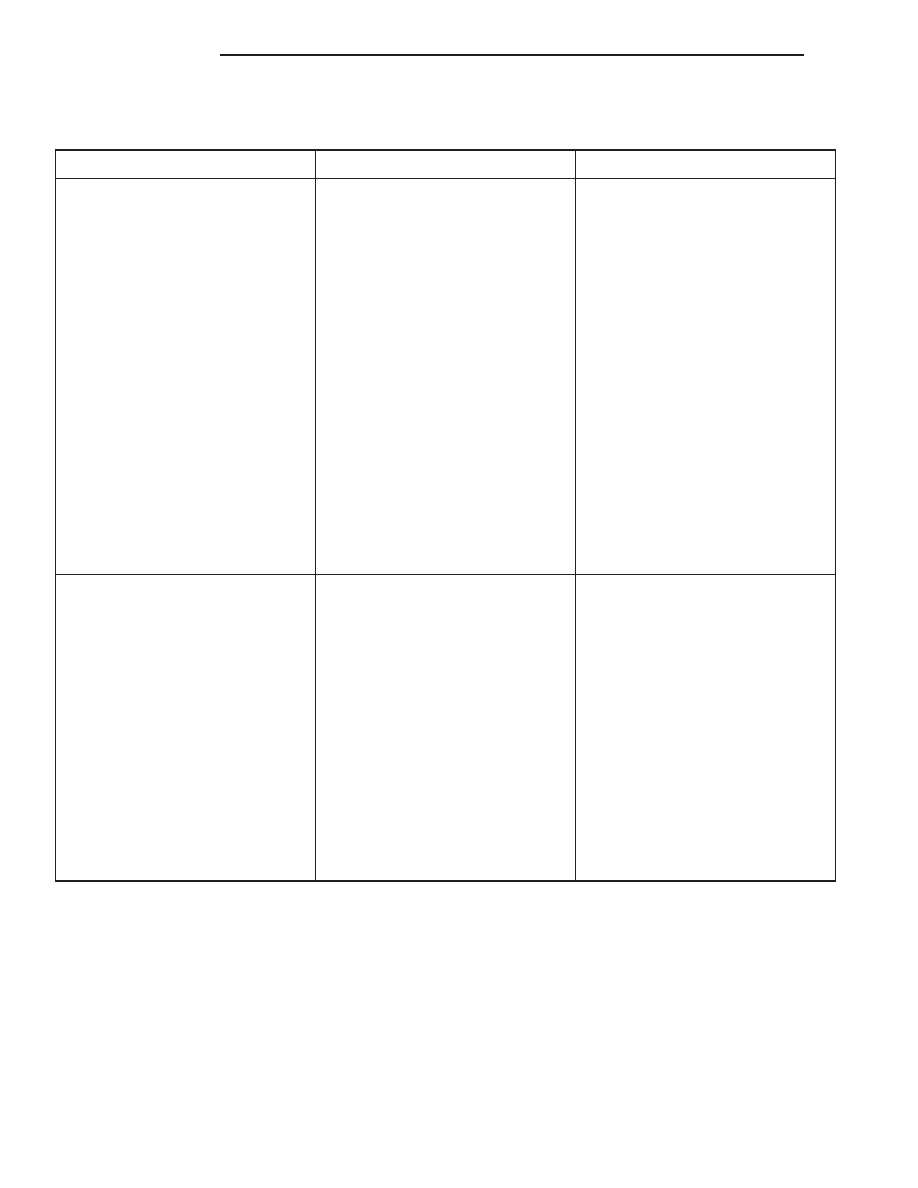Chrysler Town, Dodge Caravan. Manual - part 297

DIAGNOSIS AND TESTING - ENGINE DIAGNOSIS - MECHANICAL
CONDITION
POSSIBLE CAUSES
CORRECTION
NOISY VALVES
1. High or low oil level in
crankcase.
1. Check and correct engine oil
level.
2. Thin or diluted oil.
2. Change oil to correct viscosity.
3. Thick oil
3. (a) Change engine oil and filter.
(b) Run engine to operating
temperature.
(c) Change engine oil and filter
again.
4. Low oil pressure.
4. Check and correct engine oil
pressure problem.
5. Dirt in hydraulic lifters/lash
adjusters.
5. Replace hydraulic lifters/lash
adjusters.
6. Worn rocker arms.
6. Inspect oil supply to rocker arms.
7. Worn hydraulic lifters/lash
adjusters.
7. Replace hydraulic lifters/lash
adjusters.
8. Worn valve guides.
8. Replace cylinder head assembly.
9. Excessive runout of valve seats
on valve faces.
9. Grind valve seats and valves.
CONNECTING ROD NOISE
1. Insufficient oil supply.
1. Check engine oil level.
2. Low oil pressure.
2. Check engine oil level. Inspect oil
pump relief valve and spring.
3. Thin or diluted oil.
3. Change oil to correct viscosity.
4. Thick oil
4. (a) Change engine oil and filter.
(b) Run engine to operating
temperature.
(c) Change engine oil and filter
again.
5. Excessive bearing clearance.
5. Measure bearings for correct
clearance. Repair as necessary.
6. Connecting rod journal
out-of-round.
6. Replace crankshaft or grind
surface.
7. Misaligned connecting rods.
7. Replace bent connecting rods.
9 - 6
ENGINE 2.4L
RS
ENGINE 2.4L (Continued)